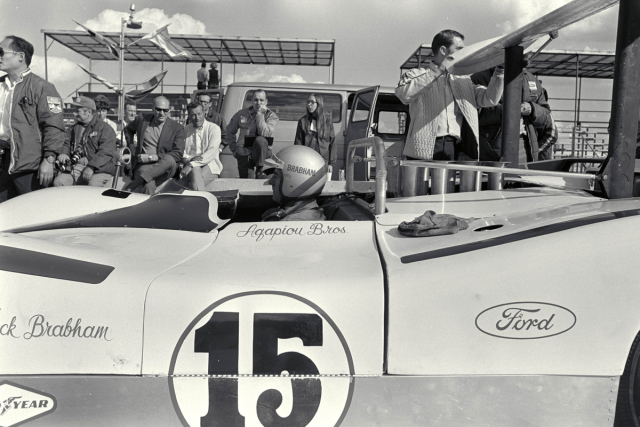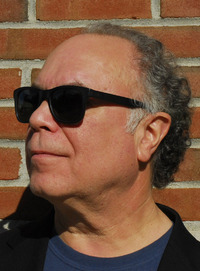Could it happen again?
 Monday, June 10, 2013 at 11:07AM
Monday, June 10, 2013 at 11:07AM By Peter M. De Lorenzo
Detroit. Many of you out there were privileged enough to see the legendary Can-Am series at its peak, and many more have come to appreciate what went on in that glorious era through films and first person accounts. But there are more than a few of you out there who don't care and deem the whole exercise as another abandoned bookcase in the historical dustbin of racing that they couldn't care less about.
And I can understand that perspective, at least somewhat. When what's happening at the very moment is most important, looking ahead is difficult and looking back is totally unnecessary. But there are lessons that can be taken from the Can-Am series that would benefit all of racing today.
Remember that back in the 60s racing and technology were on an upward trajectory together. Aerodynamic experimentation, power, tire development, lightweight material discoveries and ingenuity were rampant in all of racing. From F1 and Indy-type cars to sports cars and even in NASCAR, the need to go faster while doing it better than the competition was racing's raison d'etre back then. And those cutting-edge ingredients and the visionary thought that went with it would find its home in the Can-Am series, the closet thing to a sanctioned "run what you brung" racing series the world had ever seen.
It's amazing what minimal rules can do for a racing series, and the Can-Am, which featured the fastest cars in the world at the time - yes, even faster than F1 - was the epitome of big horsepower, fat-tired exuberance. A no holds barred experiment in speed that resonates to this day, some 50 years later.
Surprisingly, a lot of people in racing scoff at the series today, dismissing it as "too costly" for today's financial realities or "too out there" for today's hyper-technology that's at the disposal of anyone with a computer and a budget. But remember, this mindset is coming from a world that has only known restrictions and rules packages designed to contain, slow, and rein-in cars so everyone has a fair chance. Even the vaunted Formula 1 series, which prides itself as the be-all and end-all for the entire sport, exists in a world of rules packages and restrictions so that costs don't get even more outrageous than they already are.
But do the restrictions serve any purpose beyond cost and speed containment? Put simply, no. We all know that creating rules packages to "level the playing field" is nothing more than a fool's errand, a futile exercise that has been repeated over and over again throughout racing history. Why? Because racing has always had its "haves" and "have-nots" and there's not a damn thing anyone can do about that. Look at Red Bull Racing in F1, or Hendrick Motorsports in NASCAR, or, at least up until this year, Team Penske and Chip Ganassi Racing in INDYCAR, or Audi at Le Mans. Whether it's the best technology, the best talent, the best drivers, or generally just the best of everything, they all win over and over again. The "haves" usually do.
So if "thus it was ever so" in racing and it's still that way today, why not really shake things up? Why not create for one searing hot moment in time a brand new series that has a rule book that simply states "A vehicle entered in this series has to fit in the dimensional envelope provided and it must have four wheels. Everything else - including propulsion, fuel (a fuel equivalency formula will be in place), materials and aerodynamics - are free."
It would not only be better and faster than F1, it would be the new racing series that every manufacturer in the world - at least the ones with the cojones to think that they're smart enough to compete - would want to be a part of overnight. Yes it would take huge amounts of sponsorship support money, but when Bernie takes his leave from F1, do you think there will be a window of opportunity for a new racing entity to come along that would steal F1's thunder? I do.
The one thing that modern day racing should take away from the legendary Can-Am series is that a non-restrictive environment fosters creativity and visionary solutions. It pushes the development of advanced technical solutions and welcomes the application of those solutions to a competitive arena where no quarter is aked and none is given.
Could it happen again?
Well, stranger things have happened in this sport.
Publisher's Note: As part of our continuing series celebrating the "Glory Days" of racing, we're proud to present another noteworthy image from the Ford Racing Archives. - PMD

(Photo by Dave Friedman courtesy of the Ford Racing Archives and Wieck Media)
Riverside, California, 1970. World champion Jack Brabham drove the No. 15 Agapiou Brothers Racing Ford G74 Can-Am car powered by a 429 cu. in. V8 in practice for the L.A. Times Grand Prix Can-Am race, but John Cannon would qualify and race the car. He DNF'd. Vic Elford sat on the pole in Jim Hall's No. 66 Chaparral 2J Chevrolet ground effects machine, out-qualifying Denny Hulme (No. 5. McLaren Racing Cars Ltd. McLaren M8D Chevrolet) by just over two seconds - a stunning margin back then against the all-conquering McLaren team. The auxiliary snowmobile engine used to power the ground effects package on the "sucker" Chaparral would fail during the race, so Elford would DNF as well. Hulme would go on to win followed by Jackie Oliver (No. 22 TRC Limited Titanium Ti 22 Mk II Chevrolet) and Pedro Rodriguez (No. 1 British Racing Motors BRM 154 Chevrolet). Watch a cool video here.
Publisher's Note: Like these Ford racing photos? Check out www.fordimages.com. Be forewarned, however, because you won't be able to go there and not order something. - PMD




